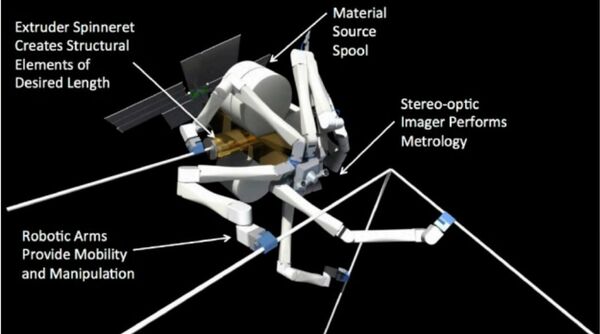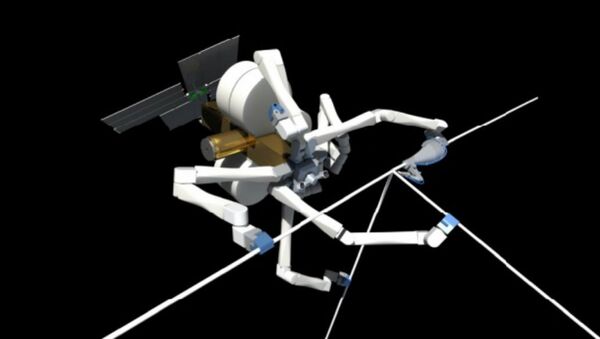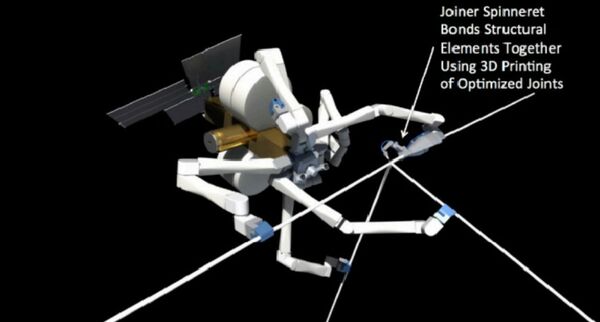A company called Tethers Unlimited is developing a futuristic “Arachnid-like” droid system, funded by the North American Space Agency, that hopes to help humanity’s journey into — and settlement in — outer-space.
Dubbed the “SpiderFab,” the droids will work similarly to a 3D printer to help construct spacecraft, radio antennas, and, in the long term, infrastructure to support the expansion of human activity in space.
Tethers Unlimited CEO and chief scientist Dr. Robert Hoyt believes that building spacecraft and other equipment on Earth and launching the finished product is a waste of time and resources. Instead, he envisions much more productive work being done in space itself.

"Our really long-term objective for all of this work is to eventually enable the use of in-situ resources to construct the infrastructure in space needed to support humanity's expansion throughout the solar system," Hoyt said during a presentation with NASA's Future In-Space Operations (FISO) working group.
"The primary [advantage] will be that we can deploy apertures and baselines that are much larger than we can currently fit into launch shrouds," Hoyt added.
"The payoff of that will be higher power, higher resolution, higher sensitivity and higher bandwidth for a wide range of NASA, DoD [Department of Defence] and commercial space missions."
Hoyt predicts that not only will crafts built in space have a sleeker, simpler, and more modern design, but will save enormously on launch costs and, as they won’t have to deal with air friction from the atmosphere, they’ll also save on launch trauma.
"Under the NIAC and SBIR work (NASA's Small Business Innovation Research) I think we've already validated the basic feasibility of the key processes required" for the SpiderFab concept, Hoyt said.
Tethers Unlimited plans to launch its first working construction robot into space within the next couple of years.







